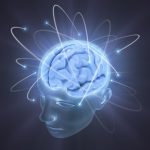Our Institutional (Scientific & Technical) Mission
BPF’s institutional mission is to promote validated scientific research and technical services development in the field of whole brain preservation for long-term static storage.
We seek to advance this mission through directed research grants, challenge prizes, outreach to appropriate scientific communities, online activities, presentations, publications, and other methods to explore the scientific hypothesis of whether a reliable medical procedure exists that is capable of preserving the neural circuitry of the human brain at nanometer scale, whether such a procedure is sufficient to preserve personal memories and identity in the opinion of a minority consensus of neuroscientists, and whether existing and historical trends in scientific and technical development allow us to make a reasonable case that these preserved memories and identity may be affordably and sustainably revived at a future date.
Through the Brain Preservation Technology Prize, we aim to spur the scientific evaluation of such technologies as chemopreservation (aldehyde or other chemical fixation, often followed by “plastination”) and cryopreservation (a process of chemoprotecting and “vitrifying” tissue for low temperature storage). The Prize seeks the development of a variety of inexpensive and reliable hospital surgical procedures which will verifiably preserve the structural connectivity of 99.9% of the synapses* in a human brain when administered rapidly after biological death.
Extending today’s existing small-volume neural preservation techniques to whole brains is essential to the scientific goal of mapping neuronal connectivity across an entire human brain – a goal that has been identified by the NIH and others as crucial to furthering of our knowledge of brain function – see for example the NIH’s Human Connectome Project. Whole brain preservation techniques also promise to advance our understanding of brain circuitry, and improve the design and usefulness of brain-inspired learning machines in computational neuroscience and computer science. Furthermore, advances in neuroscience today strongly suggest that appropriately preserved brains will contain our memories, identity, and a substrate for future consciousness, so that an appropriately verified preservation technology may allow future reanimation of the memories and identity of the preserved individual, if desired.
Should members of the scientific community find a preservation protocol or set of protocols which a minority consensus of neuroscientists believes may preserve individual memory or identity for future revival, under reasonable scientific and technical assumptions, we will make our best effort to help that preservation technology become as affordable, ethically consented, and legally available as possible, for use in hospitals, hospices, and homes around the world. That effort is our social mission, discussed next.
Our Social Mission
BPF’s social mission is to debate, discuss, and explore the potential personal, family, and social value of preservation of individual memories and identity as a free and appropriately consented personal choice, and to advocate guidelines, policies, strategies, and legislation that will increase access, affordability, and sustainability of the brain preservation choice, for all who might wish to exercise it at the end of their lives.
We seek to do this work through courteous and informed debates, discussions, and explorations in public venues, articles and presentations in a variety of media, the publication of scholarly papers in relevant journals, cultivating online communities, producing events, fundraising, and engaging in policy and legislative work appropriate to our nonprofit status.
For those who have not considered brain preservation before, we want to help people understand why inexpensively preserving their memories and identity upon their biological death, for possible future revival of either, is of great potential value for themselves, their loved ones, and society. For many, this understanding may require a slight reimagining of the nature, value, and future of their mental information to themselves, their loved ones, and society. A new social awareness comes when we recognize ourselves as not merely physical but also informational entities. We are each special collections of unique and valuable experiences and information, carried in our biology, society and technology. By consciously stewarding our informational selves, by daily choosing which thoughts, memories, and behaviors we wish to focus on in our lives, and what information we want to represent us, both now and in the future, we can best continue to improve ourselves and our communities. By such efforts we hope to do our small part to help each of us better appreciate the gift of life and realize the fullest extent and potential of our humanity.
In support of this mission, we also seek to help individuals preserve, use, and improve their brains to the greatest degree possible during their biological life. At the most basic level, we seek to promote the preservation and improvement of our brains, via good diet, exercise, proper education, rich social life, lifelong learning, positive outlook, personal integrity, and other evidence-based behaviors that promote mental and physical health. Social behaviors that improve mental health include the prioritization and maintenance of fulfilling relationships, cherished friendships, and vibrant, equitable communities. At a less obvious level, we want to help people understand the way the use of appropriate digital technologies (photos, recordings, computers, social networks, and soon, personal digital agents/avatars) provides a more stimulating, creative, and resilient environment for their biological and social brains, as well as a wealth of useful resources and “facets of self” to share with their loved ones and communities after their biological death.
Footnotes
* In the types of electron microscopy neuroscientists commonly use (FIBSEM, etc.), preserved neural tissue can be visualized down to about a 6 nanometer resolution. This allows them to directly see each neuron’s synapses and dendrites (connections to other neurons). This level of detail also includes the ability to image, directly and indirectly (via molecular probes), many elements of the “synaptome,” the number and types of special proteins (vesicles, signaling proteins, cytoskeleton), receptors (Glutamate, etc.), and neurotransmitters (at least six types in human neurons) that are known to be involved in long-term learning and memory at each synapse in the brain, and elements of the “epigenome” (learning-based DNA methylation and histone modifications) in the nucleus of each neuron. It remains an open question in neuroscience exactly which features of the synaptome and epigenome need to be preserved to retain memory and identity in each species. We know simpler connectomes, synaptomes, and epigenomes are used in organisms with simpler memories (C. elegans, Drosophila, Aplysia, etc.), and that the vast majority of neural molecules are not involved in learning and memory, but support other cell functions necessary for life. Chemical fixation and cryonics both preserve the fats, proteins, sugars, and DNA in living neurons, and fix them effectively in place, and relevant membrane receptors stay in their normal distributions as well, as verified by antibody probes. What we don’t know yet is if this happens reliably everywhere during whole brain chemical and cryonic preservation. We also don’t know the full complement of small molecules and cytoskeletal features in our neurons and glia that are necessary to memory and identity, and which molecular signal states (eg., phosphorylation, methylation) are important. But our knowledge of the molecular basis of learning and memory continues to rapidly grow, aided by exciting new neuroscience techniques (optogenetics, viral tagging, protein microarrays, etc.). Our ability to scan and verify is also rapidly improving. New types of electron microscopy, such as Cryo-TEM, can image at an amazing 3 angstrom resolution, 50 times greater magnification than FIBSEM, a scale where brain proteins and even individual atoms can be directly seen.
Our current Brain Preservation Technology Prize is focused on the connectome, imaged at FIBSEM resolution. As neuroscience advances, we may learn that certain features of the synaptome and epigenome not presently observable by FIBSEM must also be preserved. In that case, the Brain Preservation Foundation will offer additional Technology prizes, and make use of other verification methods and even higher resolution imaging if necessary. Bottom line: As neuroscience continues to advance, BPF will do our best to help science to determine whether reliable and affordable protocols can be found to preserve those brain structures that give rise to our memories and identities, according to our best evidence to date.





